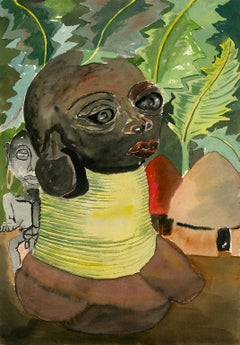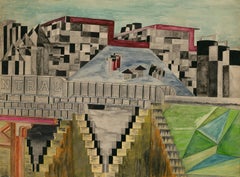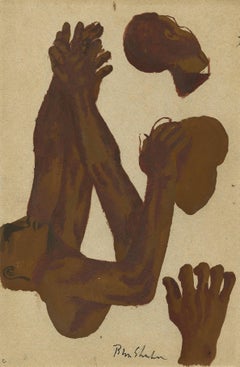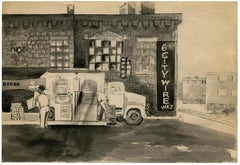Charles Elmer Harris Art
Charles Elmer Harris or Beni E. Kosh was born in Cleveland, Ohio. In the 1960s, he legally changed his name to Beni E. Kosh, which translates to the son of Ethiopia. He was a student of Cleveland artist Paul Travis at the Cleveland Institute of Art and later connected to the Sho-Nuff Art Group, a group of African-American artists and the Karamu House artist group, which was a center for artists, writers, dancers and the oldest African-American theater in the United States. Kosh rarely exhibited or sold his work and it was not until after his death that his stylistically diverse oeuvre was rediscovered to receive critical recognition. Kosh’s work is noted in the catalog Yet Still, We Rise: African American Art in Cleveland 1920–1970 and included in exhibitions at the Cleveland State University and the Butler Institute of American Art.
1950s American Modern Charles Elmer Harris Art
Watercolor
1940s American Modern Charles Elmer Harris Art
Watercolor, India Ink
2010s American Modern Charles Elmer Harris Art
Mixed Media, Acrylic, Gouache, Board
1940s American Modern Charles Elmer Harris Art
Gouache
1940s American Modern Charles Elmer Harris Art
Paper, Gouache
Mid-20th Century American Modern Charles Elmer Harris Art
Gouache
1940s American Modern Charles Elmer Harris Art
Watercolor
Mid-20th Century American Modern Charles Elmer Harris Art
Paper, Gouache
Mid-20th Century American Modern Charles Elmer Harris Art
Paper, Gouache, Oil Pastel
1930s American Modern Charles Elmer Harris Art
Gouache, Board
Mid-20th Century American Modern Charles Elmer Harris Art
Paper, Oil Pastel, Gouache
2010s Modern Charles Elmer Harris Art
Acrylic, Watercolor, India Ink, Paper
1930s American Modern Charles Elmer Harris Art
Gouache, Board
1940s American Modern Charles Elmer Harris Art
Paper, Gouache
1950s American Modern Charles Elmer Harris Art
Watercolor



